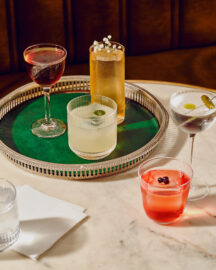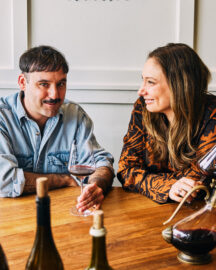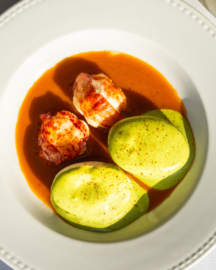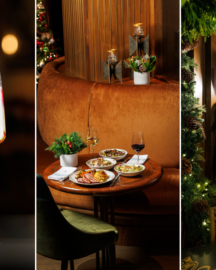Ostersund Is At The Centre Of Something Big
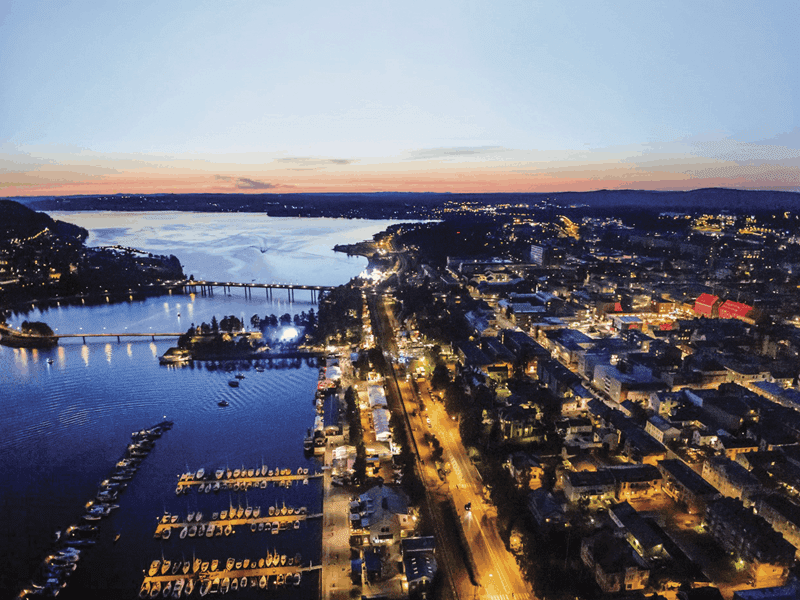
ÖSTERSUND, SWEDEN – “This is not the middle of nowhere,” says chef and entrepreneur Fia Gulliksson, as we eat thin, wood oven-baked barley bread laden with fatty sheep yogourt and topped with spoonfuls of fish roe. From her candlelit kitchen we can see the dreamy Scandi-decorated boathouse she rents on Airbnb and the lake bordering Ostersund, the town where she lives, about 550 km northwest of Stockholm. “There is a town, there is a huge ski resort, there is some of the cleanest land in the country to grow vegetables.”
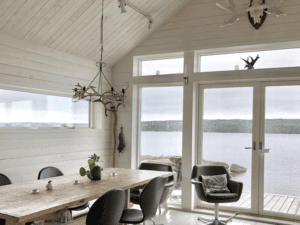 What gets Gulliksson exasperated is that in the Netflix Chef ‘s Table documentary about Magnus Nilsson, the chef at Fäviken a world famous restaurant located in Järpen, about 75 km outside of Östersund they repeat at least six times (she counted) that he is “in the middle of nowhere.”
What gets Gulliksson exasperated is that in the Netflix Chef ‘s Table documentary about Magnus Nilsson, the chef at Fäviken a world famous restaurant located in Järpen, about 75 km outside of Östersund they repeat at least six times (she counted) that he is “in the middle of nowhere.”
This, she insists, is absurd. “First, it’s not true.” And second, she explains, it makes a journey to Fäviken sound like a very long one-stop trip, when there are many other things to do in the area if you are a lover of food, hunting, hiking, skiing and the general outdoors. “Have you tried Krus?” she asks, referring to one of several Fäviken offshoots in the area.
But first, let it be acknowledged that Fäviken is, indeed, a foodie paradise worth the trip in itself.
It started in 2008, when Swedish hedgefund billionaire Patrik Brummer asked Nilsson to come work as a sommelier at the restaurant on his estate, a 20,000-acre 19th-century farming and hunting domain. Inspired by his Swedish roots but also his years in Paris working at a fine dining mecca called Astrance, Nilsson gradually turned the place into a gourmet destination where exclusively local ingredients, including many herbs and vegetables grown onsite, are prepared with state of the art techniques and avant-garde creativity.
At Fäviken, be ready to taste colostrum, pork blood, old cows, the most delicate king crab and almost burnt cream, and finish the more than 20-dish dégustation menu with snus, the moist tobacco paste Swedes stick on their gums at all times. Here, they grow it in the backyard.
How do we know? When diners arrive at Fäviken, a visit to the garden where the tobacco flourishes-among many other plants is mandatory, a field trip elevated by a picnic basket filled with local beer, lettuce leaves dipped in cream, and a highly concentrated strawberry sorbet.
But what is striking about Fäviken, besides the food, is the feeling of a place that deeply responds to any fantasies about rural Scandinavia. The wooden buildings, the candles everywhere, the sauna, the torches that mark the entrance to the restaurant, the huge fur coat hanging on the wall like a Viking memento. And all this in the middle of a stunning landscape, with a pristine lake nearby, evergreen forests, deer grazing in the fields Nilsson is raising them and the impressive Åre mountain massif in the background.
It takes at least eight hours to get to Fäviken from Stockholm by car, or it can be reached by flying to Östersund and then driving an hour to the restaurant. It’s also possible to go by train, arriving in Åre, the giant ski resort about 20 minutes away. So if one is to travel that far, it’s interesting to know that there is more there than just one restaurant.
Fäviken is located in an area called Jämtland where there was never any industrialization, and therefore it’s clean, explains Gulliksson. That’s why it’s popular for hiking and mountain biking.
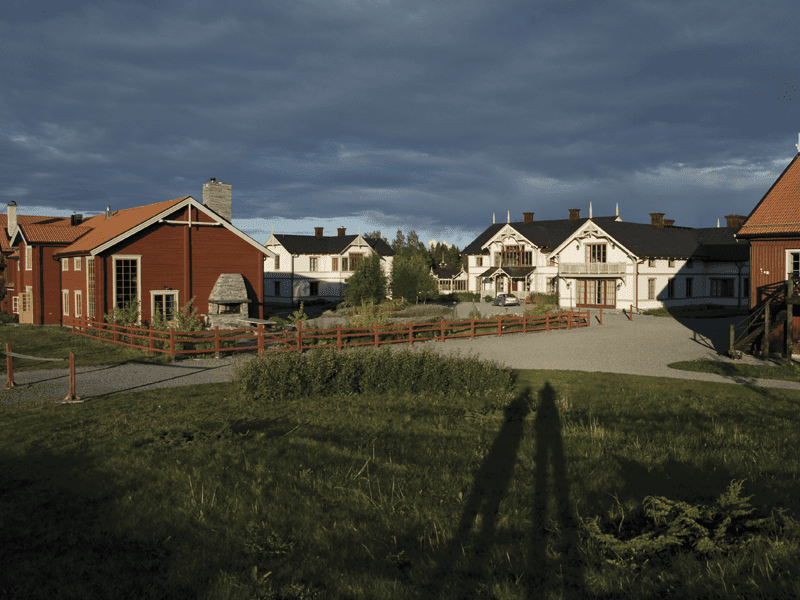
But it’s not an empty space. Jämtland is where Ingemar Stenmark became a skiing legend. Åre is a huge and sophisticated ski resort with all the shopping and eating options of a Whistler or Tremblant. It’s not a surprise that Magnus Nilsson chose it as the location for his second restaurant, Krus, a nononsense, perfectly supplied Scandinavian bistro and bakery where king crab salad and onion gratin are served alongside rhubarb clafoutis and perfect cardamom buns.
For fans on a Nilsson pilgrimage, he also owns a butcher shop called Undersåkers Charkuteriefabrik in the area, where all the meat served at both restaurants is prepared.
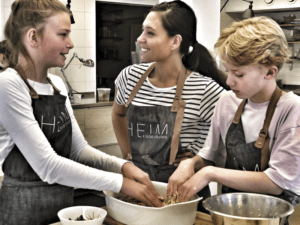 On the road back to Östersund, there is at least one stop after shopping for high-end outdoors gear at the Lundhags outlet for food at Kretsloppshuset in Mörsil. It’s a perfect spot for a lunch buffet or fika a typical Swedish afternoon snack with coffee. Kretsloppshuset is a bed and breakfast place with a restaurant and a small shop, all offering fair-trade organic cuisine. In Östersund there are more options, including HEIM, the “food studio” owned by Gulliksson, which operates as a restaurant on Fridays. The rest of the time it’s a food business incubator, a photo studio, a cooking school and what she calls a “maker space for responsible gastronomy. ” wants it to be the starting point for many other restaurants and cafés in the area. Gulliksson herself started a restaurant called Jazzköket years ago and, once it proved to be profitable, sold it to start her studio. Her goal, she says, is to help other entrepreneurs launch more businesses that will make the area even more interesting for foodie travellers.
On the road back to Östersund, there is at least one stop after shopping for high-end outdoors gear at the Lundhags outlet for food at Kretsloppshuset in Mörsil. It’s a perfect spot for a lunch buffet or fika a typical Swedish afternoon snack with coffee. Kretsloppshuset is a bed and breakfast place with a restaurant and a small shop, all offering fair-trade organic cuisine. In Östersund there are more options, including HEIM, the “food studio” owned by Gulliksson, which operates as a restaurant on Fridays. The rest of the time it’s a food business incubator, a photo studio, a cooking school and what she calls a “maker space for responsible gastronomy. ” wants it to be the starting point for many other restaurants and cafés in the area. Gulliksson herself started a restaurant called Jazzköket years ago and, once it proved to be profitable, sold it to start her studio. Her goal, she says, is to help other entrepreneurs launch more businesses that will make the area even more interesting for foodie travellers.
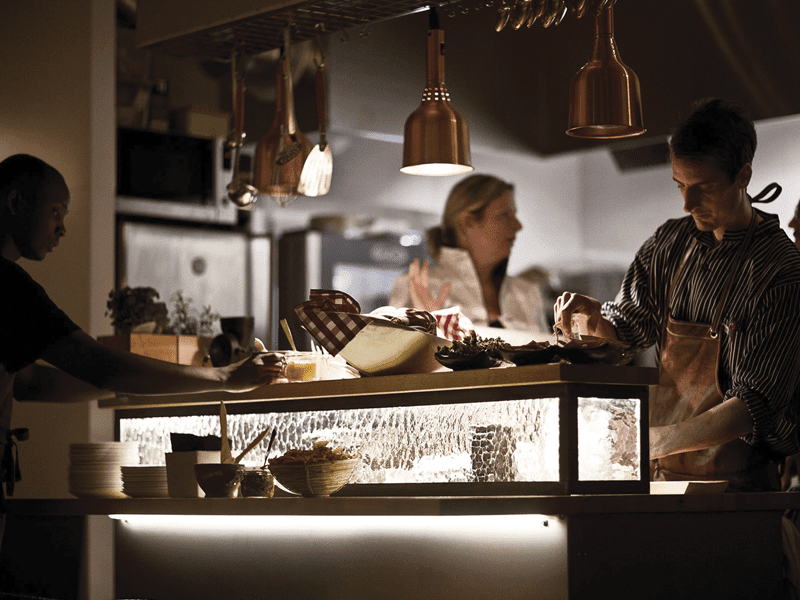
Jazzköket, a warm establishment that combines the roles of cafe, restaurant and bar, and is still her favourite in town, has books to read, occasional live music and a bohemian feeling any small northern Canadian town would dream of having especially in the middle of nowhere.

